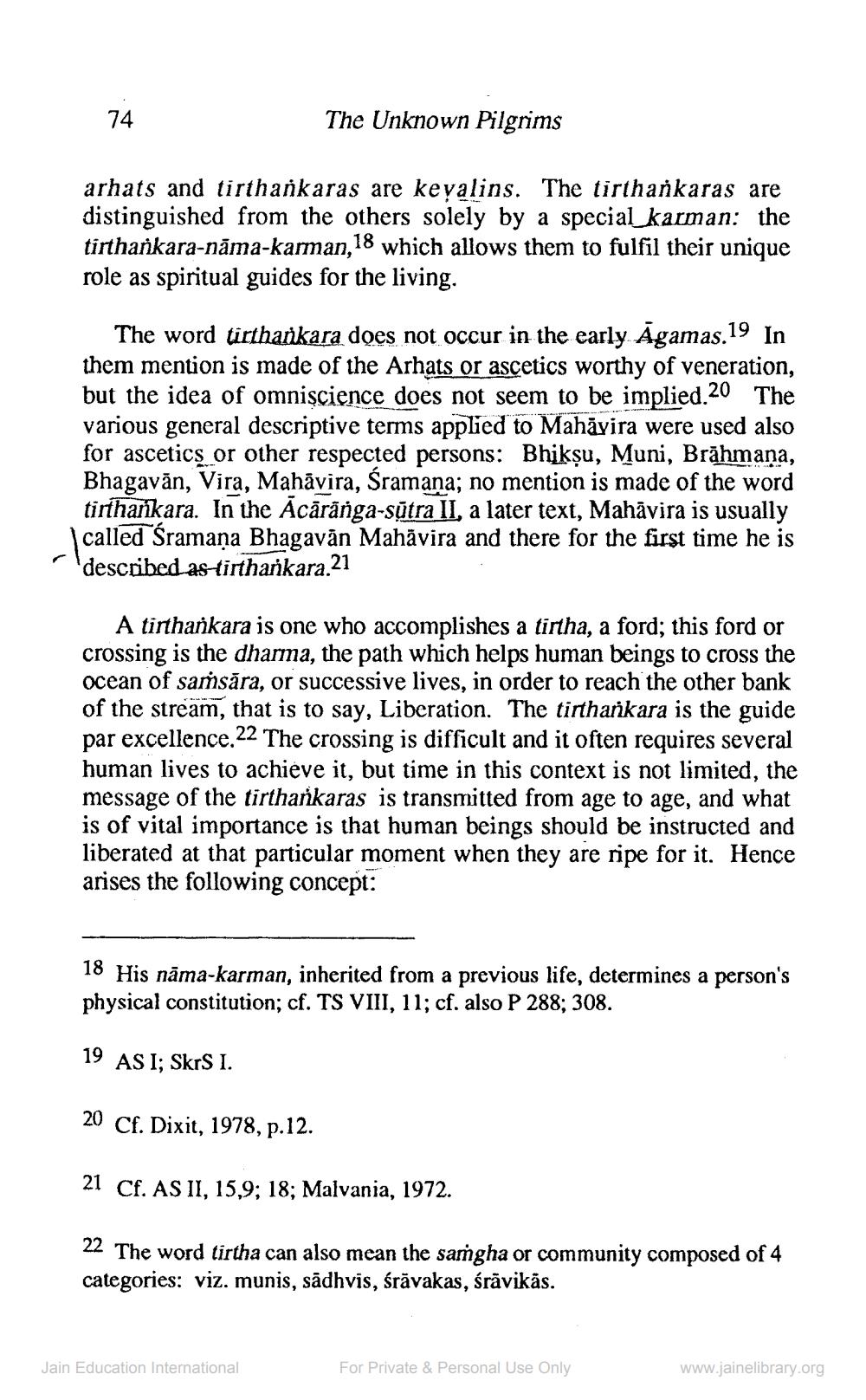________________
74
The Unknown Pilgrims
arhats and tirthankaras are keyalins. The tirthankaras are distinguished from the others solely by a special_karman: the tirtharkara-nāma-karman, 18 which allows them to fulfil their unique role as spiritual guides for the living.
The word tirthankara does not occur in the early Agamas. 19 In them mention is made of the Arhats or ascetics worthy of veneration, but the idea of omniscience does not seem to be implied. 20 The various general descriptive terms applied to Mahavira were used also for ascetics or other respected persons: Bhikṣu, Muni, Brāhmana, Bhagavān, Vira, Mahāvira, Sramana; no mention is made of the word tirtharkara. In the Acārānga-sūtra II, a later text, Mahāvira is usually called Sramaņa Bhagavān Mahāvira and there for the first time he is 'described as tirhankara 21
A tirtharkara is one who accomplishes a tirtha, a ford; this ford or crossing is the dharma, the path which helps human beings to cross the ocean of saṁsāra, or successive lives, in order to reach the other bank of the stream, that is to say, Liberation. The tirtharkara is the guide par excellence.22 The crossing is difficult and it often requires several human lives to achieve it, but time in this context is not limited, the message of the tirthańkaras is transmitted from age to age, and what is of vital importance is that human beings should be instructed and liberated at that particular moment when they are ripe for it. Hence arises the following concept:
18 His nāma-karman, inherited from a previous life, determines a person's physical constitution; cf. TS VIII, 11; cf. also P 288; 308.
19 AS 1; SkrS I.
20 Cf. Dixit, 1978, p.12.
21 Cf. AS II, 15,9; 18; Malvania, 1972.
22 The word tirtha can also mean the samgha or community composed of 4 categories: viz. munis, sādhvis, śrāvakas, śrāvikās.
Jain Education International
For Private & Personal Use Only
www.jainelibrary.org




